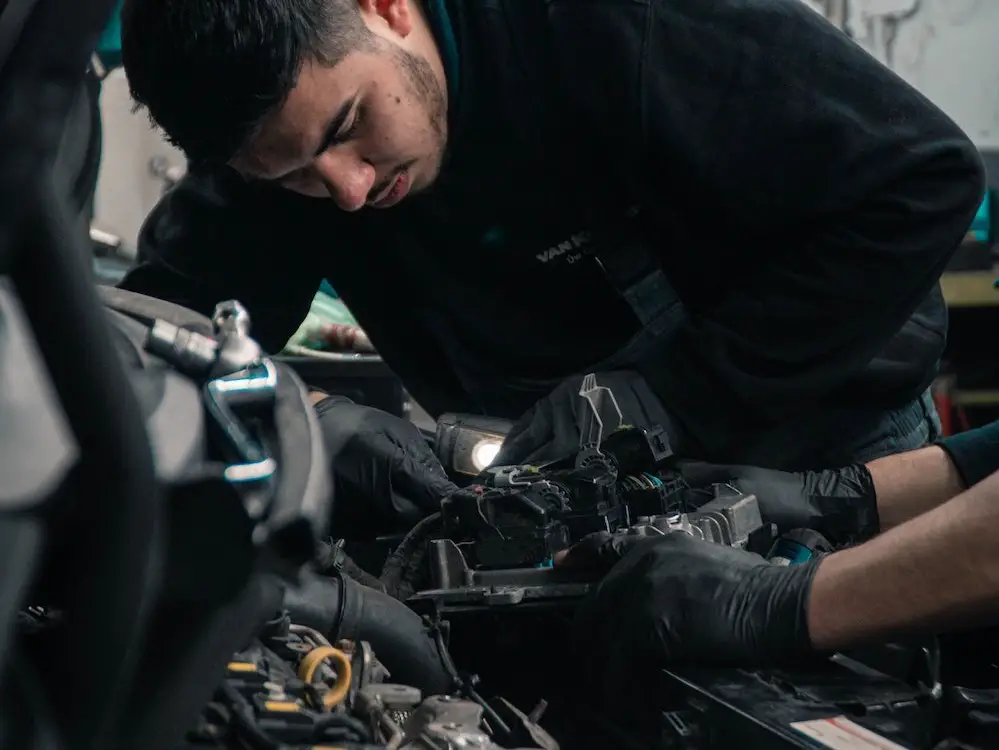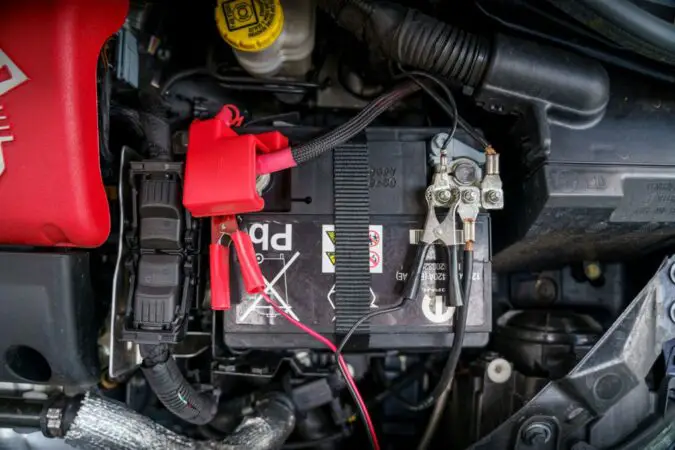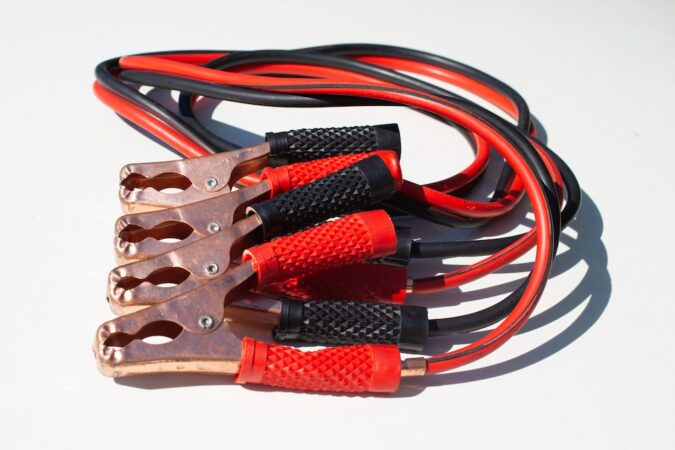If your tail lights or air conditioning suddenly stop working, you may be unsure of the exact cause. At first, you may not know how to tell if a relay is bad. However, it is entirely possible that the relay is to blame for one of your electrical components failing.
Relays are similar to electrical switches. They control your vehicle’s electrical components. Their main use in automobiles is to quickly and efficiently switch between high-power loads.
Any vehicle contains numerous electrical components. Finding the root cause of a problem can be a challenge. Even the smallest misdiagnosis can lead to major problems.
- Causes Of Relay Failure
- Failed Relay Symptoms
- Testing Relays
- Swapping Relays
- Tools To Use
- Do Relays Fail In Cold Weather?
- Cost Of Replacement
A car’s relays are one of the most common components that may fail. It can be difficult how to tell if a relay is bad, but there are a few common indicators that it should be replaced. If you suspect that your relay is faulty, there are a few things you can check to see if it needs to be replaced.
Testing a relay is not too difficult. You can do it quickly by following the instructions in this article.
What Does A Relay Do?
It is important to understand what a car’s relay does. Relay switches control the flow of electric current within a circuit. This is critical in order to reduce the amount of electricity. Without a relay, a switch can easily burn out.
When the relay does its job, your car’s electrical components function normally. These include air conditioning, headlights and taillights, automatic windows, and all other circuit-based components. When you turn on the air conditioner, for example, the electrical current must first pass through the relay. Only then will it enter the switch and the component.
What Causes A Relay To Fail, And How Can You Tell?
Relays are intricate electromechanical devices that convert electrical signals from a switch to mechanical motion. They have small contacts that can be operated by a low voltage current. A relay must be able to reach and activate these tiny parts in order to function properly.
Improper installation, including insufficient insulation, is one of the most common causes of failure.
The causes may vary in complexity depending on the type. But they all involve some sort of construction flaw. A faulty connection between electrical contacts is the most common cause of relay failure.
Another possibility for relay failure is dirt or other contaminants getting into the contact areas. Depending on which point it reaches, this may result in erratic behavior of the component.
Symptoms Of How To Tell If A Relay Is Bad
The symptoms are important to know if you want to know how to tell if a relay is bad. Since all the electrical components have relays attached, the failure of any relay can cause damage. Every component that is linked to a relay is prone to failure if it fails. Whether it’s your car’s air conditioning, power windows, or any other component, they’re all susceptible to this problem.
There could be several reasons for a relay not working. It could be as simple as dirt becoming lodged inside a relay. Or it may have become loose and needs to be tightened. Whatever the cause, there are always some telltale signs of a relay failing.
1. How To Tell If A Relay Is Bad – Car Stops
If the relay connected to the ignition fails, your car will come to a halt. The reason for this is that there will be no more sparks going to the spark plugs. As a result of the lack of electrical current, there will be no combustion.
2. How To Tell If A Relay Is Bad – Dim Lights
You will be unable to drive in the dark if the relay for your headlights fails. It is possible that the headlights will not work at all or will be too dim to see in the dark.
3. How To Tell If A Relay Is Bad – Power Windows
It is possible that your power window relay isn’t working. This means that your windows will not function properly. Even if they roll down, they may get stuck or only partially operate. If you press the switch to roll down the windows, nothing may happen.
4. How To Tell If A Relay Is Bad – Air Conditioning
If your air conditioner isn’t working, it could be due to a number of factors. It may appear to work, but it may not be cool enough. Alternatively, there could be no air coming out of the vents at all. In either case, the air conditioning relay may be malfunctioning.
All of the electrical components, as shown in the examples above, have relays. Whether it is air conditioning or power windows, it won’t work if the relay stops working. In some cases, it may appear to be working, but not in the way it should be.
Testing For How To Tell If A Relay Is Bad
Once you’ve identified the warning signs when you know how to tell if a relay is bad, you can move on to the next step. Your component is either not working at all or is only partially working.
For example, your air conditioning system may not be functioning properly. You suspect that something may have gone wrong. While you can have your relay checked by a mechanic, you can do it yourself too.
1. Clicking Sounds
The first step is to listen for any clicking sounds. You can locate the fuse box depending on the make and model of your vehicle. In most cars, the fuse box is located beneath the hood.
The PDC, or Power Distribution Centre, will have a map that shows the location of the relays. You can pinpoint the relay’s location on the map.
The owner’s manual will have the PDC. A quick Google search will also bring up the information.
When you turn on the air conditioning, listen carefully to any sounds coming from the fuse box. A clicking sound indicates that one side of the relay is operational.
This could happen for a variety of reasons. Here are a few examples:
- There may be bad contact.
- The relay may not be receiving any power.
- There may be a bad fuse relay.
- The ground connection could be faulty.
- There could also be some issues with the air-conditioning itself.
- There is an issue with the air conditioning switch.
It’s possible that there is no clicking sound. In this case, the relay circuit is defective.
Another cause could be that the relay’s internals has been damaged.
2. Inspecting The Relay
Follow the steps below to inspect the relay:
- Remove the relay with the engine turned off.
- Grip it tightly and pull it until it comes out.
- Shake it a little to loosen it in case it is too tight.
- Inspect the relay thoroughly after removing it.
- Look for any indications of corrosion. Ideally, the underside should be absolutely clean. If not, replace the relay right away.
- Next, inspect the terminal from where you took the relay out.
- If you see melted plastic, it means that the terminal casing was overheated, causing it to melt.
- In this case, you must replace the relay.
If you see only minor corrosion, you can buff it clean and it will work again.
3. Checking The Relay With A Multimeter
Next, check the relay with a multimeter to find out whether it is working or not.
- It should show 12 volts at the pin’s location in the fuse box.
- Check various locations, starting with the pin for 85. Once you check for voltage at that position, move on to the next point.
- Check for ground at the 86 pin position.
- Similarly, go to the 87 pin position and ascertain the voltage. If there is none, the fuse has blown.
- Another reason could be a problem with the circuit breaker.
- In the next step, check relay point number 30. If it looks fine, then change the relay since the problem is with the relay.
In order to make sure that you have completed the steps correctly, you can go through them a second time.
How To Tell If A Relay Is Bad, And Swapping Them
Interchanging the defective relay with another one is an alternative method to check. Use the working relay to ascertain whether the component works.
Disadvantages of Swapping Relays
- The problem with simply swapping relays is that they are not always interchangeable. For this, a combination of different circuit boards may be required. Not to mention the extra time it would take to replace them. You may end up doing more harm than good if you don’t know what you’re doing.
- The car may make use of a specific type of relay. If you replace the relay without knowing what type it is and how it works, the car may not function properly and may even be unsafe to drive.
- Besides, the relay may not have the same amperage as the original. This could result in an electrical shock or a fire.
Safety Tips While Changing Relays
Given below are some safety tips that you must observe while checking relays.
- It is important to use the correct relay.
- Do not use parts from another vehicle. This can cause shorts and may damage the electrical circuit.
- Be extremely cautious when handling the relay.
- A sudden drop could damage it, rendering the relay inoperable.
- Finally, make sure that you are not near any flammable materials.
Ideally, it should be a warm, dry, and secure location. This can be either in your garage or a mechanic’s workshop.
Follow the instructions in your owner’s manual. The manual will detail the exact steps you must take when replacing the relays.
Should I Disconnect The Battery To Change The Relay
You may know how to tell if a relay is bad. But, if you don’t disconnect the battery, you risk an electrical surge that could harm you. It could also damage your car, which may be expensive to repair.
Unplug your relay after accessing the fuse box. Then replace the relay by inserting it into the relay socket.
You must disconnect the battery before you replace the relay. Preferably, attach a ground strap to the negative terminal of the battery and a grounded surface. This ensures the safety of those working on a vehicle’s electrical system.
Are All Relays The Same?
No, not all relays are the same. It doesn’t matter if the relay has the same number or location of terminals. It has to work on the same application.
Some relays can cause a voltage spike of more than 100 volts on a 12-volt system if used incorrectly.
Are Relays Interchangeable If A Relay Is Bad?
There are various types of relays available, each with its own specifications and power ratings. If the power rating is too different, the voltage may either be too high or too low.
Tools To Use When You Tell That A Relay Is Bad
Here are the tools that you may require if a relay is bad:
1. Multimeter
A multimeter diagnoses electrical problems in vehicles. It does this by measuring voltage, current, and resistance, among other things. You can determine why certain functions of the car aren’t working or aren’t performing as well as they should.
The probes are inserted into the corresponding circuit board plugs. A relay is connected to one of these plugs.
You can test the functionality of car relays with a multimeter. When power is applied, the relay should click. If it does not, then it has an open circuit.
2. Relay Tester
Use a relay tester once you know how to tell if a relay is bad. The tester diagnoses issues such as intermittent power, bad circuitry, and faulty grounds.
A relay kit contains one or more relays that can be turned on by turning on the ignition key. You should see a test light come on. Once the light is on, you know that the circuit is live and working properly.
The relay tester sends a signal from a device with a circuit board. For example, it sends a signal from a pressure sensor to a device that controls a component like a fuel pump. The tester replaces the original relay with its own to do this.
The tester also needs the battery and circuit board to be connected. You can use the tool by attaching an alligator clip from the tester to any wire on either side of the circuit board.
3. Jumper Harness
While troubleshooting or diagnosing issues, you can check the electrical system with a jumper harness. It is faster and easier than removing the fuse box cover and then removing fuses one at a time.
The fused jumper harness connects to the fuse box, which houses all of the car’s fuses. It is made up of a cable connecting the battery to the starter solenoid. The cables are clamped at one end. Then they are threaded through the engine compartment to various points throughout the vehicle.
Tracing wires from point to point can help you diagnose electrical problems. This is in contrast to checking them from under the hood.
Jumper wires are required since the battery leads are not long enough. The wires ensure that power from the battery is delivered to the new relay. Without them, there is a risk that power will not reach the new relay, causing it to malfunction.
4. New Relay
You may want to keep a new relay with you to use as a replacement. A replacement relay should be available at your local auto parts store. You must first determine which type of relay is required for your specific make and model.
How To Tell If A Relay Is Bad – FAQs
Here are some common questions that have been answered:
What If I Can’t Find The Relay?
Suppose you know how to tell if a relay is bad but the relays are difficult to locate. The correct relay is determined by the make and model of your vehicle.
Every car manual will include a diagram of the relay circuit. Once you’ve located the diagram, you can see where the relays are located.
Will My Car Start If A Relay Is Bad?
When the ignition relay fails, there is no power. It will shut off power to the fuel pump and ignition system. No power results in a no-start condition.
Do Relays Fail Often?
Relays are typically very dependable components. However, they can sometimes fail for a variety of reasons. These include poor product quality, inappropriate use, insufficient maintenance, and so on.
Can A Relay Fail If It Is Too Hot?
During normal operation, the relay coil will get warm. The contacts may become hot. This means the relay is old and needs to be replaced.
If not, the contact resistance will rise and result in a line failure.
Do Relays Fail In Cold Weather?
The temperature outside can affect a relay. Condensation might form inside a relay when the outside temperature is cold. When the electronics are turned on, water droplets are emitted and sprayed onto the contacts of the relay.
As a result, corrosion will appear on these contact points. Corrosion in a relay can cause electrical failures.
Can I Test Relays Without A Multimeter?
Suppose you are certain of how to tell if a relay is bad. But you do not have the necessary testing equipment. In that case, you have two options.
- You can either be cautious and simply replace the relay, which is the quickest and easiest solution.
- Or you can hire a mechanic to test and replace relays for you.
Can A Relay Short Out?
A relay has a wire coil or an electromagnet armature and contacts. When the relay is switched on, power shifts between circuits. Short circuits can be caused by uninsulated or worn contacts.
A relay short circuit damages the relay. If the power supply is sufficiently high, it can cause an electrical fire. The best way to avoid this is to keep your contacts clean and free of debris and grease.
What If I Don’t Replace The Relay If Is Bad?
Once you can tell if a relay is bad, then you should replace it. If not, the vehicle becomes susceptible to surges and power outages. This can seriously damage the car’s electronic system. It might even be dangerous for others if you are on a busy highway.
There could be other problems too. Some may experience a loss of power steering and brakes. Others may have their engine or electrical system stall. It can even result in a fire.
What Is The Cost Of Testing Relays?
If you have a multimeter, you can test relays yourself. A multimeter is not very expensive.
However, locating the relay in the car may be difficult. You may need to check several relays until you find the defective one.
If you decide to call a mechanic to check relays, it may cost over $20. It could cost you as little as $10, depending on your geographical location.
Cost Of Replacing A Relay To Solve How To Tell If A Relay Is Bad
Once you know how to tell if a relay is bad, you can have your car repaired by a mechanic. Charges will vary depending on the mechanic’s location. The make and model of your car will influence the charges.
On average, it could cost about $60 to $100. It may be lower or higher depending on your car model. Parts will cost you $20 or so.
An aftermarket relay can cost up to $250. It depends upon which car you have and the condition of the relay. You could get it for as little as $50 as well.
The cost of labor may vary depending on where you live. Relays for various vehicles have different prices. Although the relay may not be very expensive, labor costs may be high depending on where you live.
How to Test a Relay Safely and Easily
- Relays function like switches, controlling several electrical components in a vehicle by letting one circuit control another despite differences in amperage.
- Testing a relay is a simple process and can be done even by amateur mechanics.
- When working with relays, safety should not be overlooked. It’s essential to check the vehicle’s service manual, handle the relay gently, avoid mixing and matching relays, and not modify the relay in any way.
- Checking faulty relays does not require an entire toolbox, only a high-impedance test light, an ohmmeter, jumper wires, a replacement relay, and a service manual.
- The easiest way to test a relay is to swap it out with a known good replacement, but this can be disadvantageous if the same problem that cooked the first relay can occur again.
- The proper way to test a relay is to measure its resistance, check the connectors, energize the electromagnet coil, and test the relay’s voltage, switch, and resistance using a multimeter.
- Gather all necessary tools before testing the relay to save time.
- If unsure of a relay’s functionality, it’s better to replace it than to ignore it, as it can lead to frying wires and starting a fire.
- Repair manuals can be of great help in locating and replacing the correct relay for a specific vehicle.
- Most vehicles have relays, and the most expensive part of testing and replacing them is the relay itself, which can cost anywhere from $5 to several hundred dollars.
How To Tell If A Relay Is Bad – Conclusion
One of the most important parts of a car is the relay. It ensures the proper operation of all electrical systems in vehicles.
When you have a faulty relay, identifying it can take some time. There are numerous relays, and checking each one of them takes time.
Always refer to the owner’s manual for a detailed map of all the relays. This will save you a significant amount of time. Understanding the type of relay and how to identify it is critical to properly repairing or replacing it. When you see a warning sign or a malfunction, replace the relay as soon as possible.
Use the information provided above to figure out how to tell if a relay is bad. You can replace the relay yourself since it is straightforward and easy. If you need help, you can call a mechanic.





